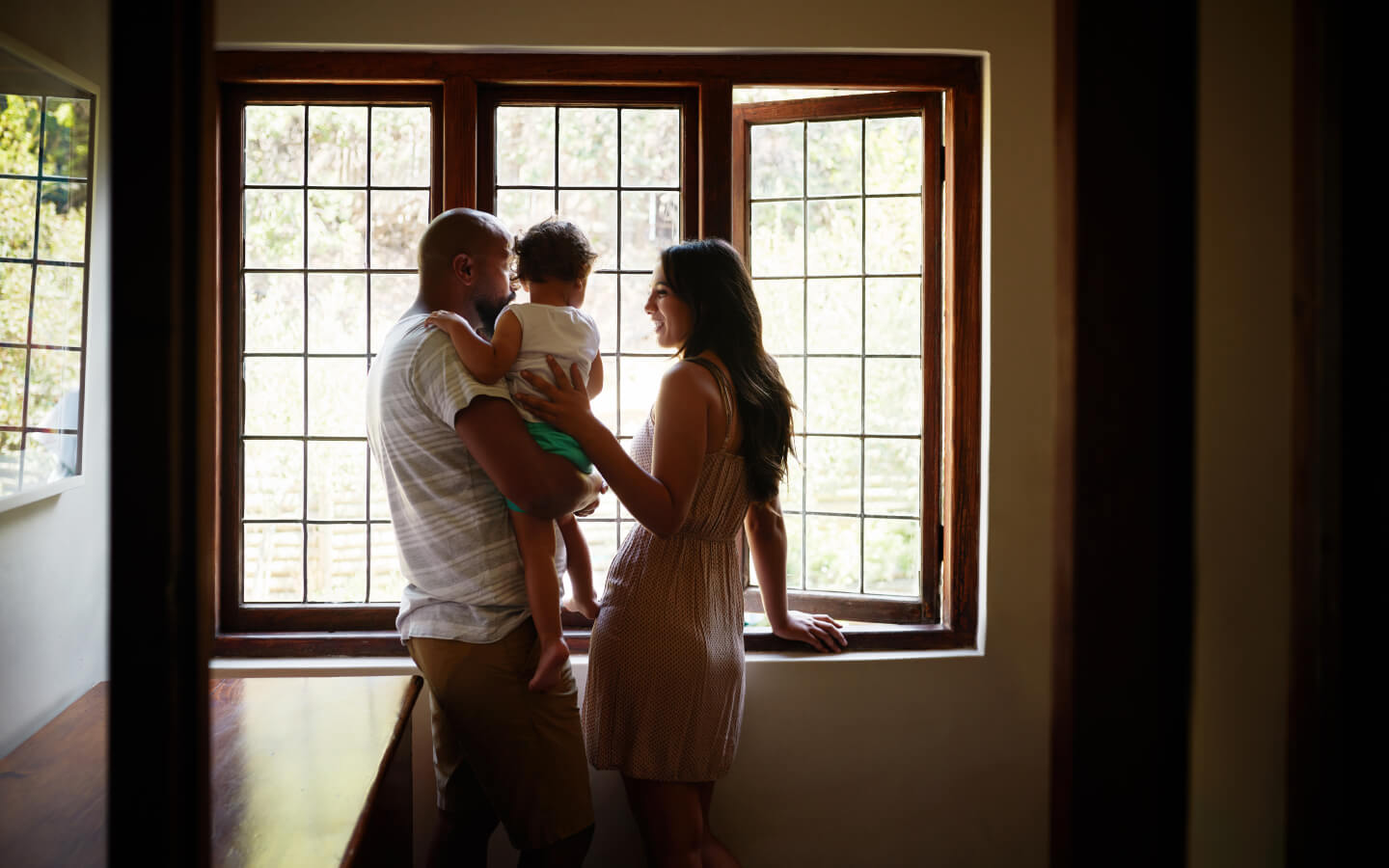42% of Americans have no emergency fund.
While financial experts recommend that people have three to six months’ worth of living expenses set aside as an emergency fund, a recent survey revealed that 42% of Americans have no emergency fund at all. The survey, conducted by U.S. News & World Report, indicated that 40% of Americans couldn’t cover a $1,000 emergency expense with cash or savings, and 60% reported having experienced an unexpected expense within the past year.
The survey also revealed that 82% of Americans have a financial goal for the year. With that in mind, we're offering you a challenge to save $1,000 in 90 days. You might do this to save up for a significant purchase, such as a car, or for building an emergency savings account.
Without a financial cushion, many people resort to borrowing money during a financial emergency, such as putting such expenses on a credit card. If you can’t pay the balance off at the end of the month, this could result in high interest charges that set you further behind. For many people, a three-to-six-month emergency fund is more of a long-term goal, so let’s focus on how to save $1,000 in 90 days.
Track Your Spending and Set Goals
If you’ve never created a budget before, now is a good time to start. Of course, many people will draft a budget and soon forget about it. While $1,000 might seem like a large amount to save in three months, try breaking this down into weekly goals. Try saving about $77 each week for 13 weeks. That works out to a little more than $11 per day.
We offer complementary tools for our clients to help them manage their funds. Money Manager, which is included and embedded within our online banking and mobile app, can help you track your spending and savings. You can sync it to your bank accounts and use it to keep track of your funds and make transfers. Our Home Budget Calculator makes it easy for you to analyze your budget by inputting your income, withholdings, and expenditures.
See Where You Can Save
If you use a credit card or debit card for most of your purchases, keeping track of your spending should be easy. Even if you use cash, try keeping track of where you spend every dollar and see how even small expenses can add up to significant amounts over time.
Many people sign up for a streaming service to watch a particular movie or a series, then go several months without using it again. The cost of grabbing coffee on the go, eating out, and having food delivered may not seem like much, but these can take a significant toll on your income over a typical month.
Look for ways to save money and reduce expenses. Cooking more meals at home and taking a lunch to work can add up to significant savings over time. Try brewing a thermos of coffee at home and bring that to work. Consider doing this for a week and add up how much money it saves. Try limiting your restaurant meals and coffee shop visits to just those for a special treat, such as after a week of meeting your budget goals.
If you have multiple subscription services, try cutting one or more of them. After all, if there is a service you don’t use, why spend money on it? If there’s a show that you want to see, consider binge-watching it and making the most of that subscription while you have it, then cancel before it renews.
Figure out Where You’ll Keep Your Funds
One of the benefits of the emergency fund challenge is that it not only provides a financial cushion, but it can also boost your income if you keep it in an interest-bearing account. Financial advisors recommend keeping an emergency fund in an account that you could readily access. After all, it wouldn’t be much of an emergency fund if you had to wait to use it.
Perhaps the most obvious place to keep this money is in an interest-bearing account, such as our regular savings account or our student savings account. Many of our clients use a checking account for depositing their paycheck, paying bills, and making cash withdrawals.
By keeping their emergency fund in a savings account, they discover it’s less tempting for them to spend that money. All First Bank accounts are FDIC insured for up to $250,000 per client ($500,000 for married couples with joint accounts), so your money is safe.
Set up Automatic Savings
Many of our clients have their paychecks deposited into their checking account using direct deposit. They may transfer funds to their savings account once a month or, in many cases, they set up automatic transfers that happen once a month at each pay period. In some cases, their employer lets them automatically deposit their paycheck into different accounts. Automating their savings makes it easier for many of our clients to stay within a budget, because they only use their checking account for regular expenses.
Try to Boost Your Income
If asking for a raise at work is unlikely to yield results, consider other ways you might earn a little extra income. If your employer offers overtime pay, could you take on another shift or work some extra hours now and then?
Take a look at what you have at home. Are there any gifts you don’t use that are still in their boxes? Do you have any electronic devices, appliances, or other items that you don’t really need but are still usable? Consider what you could sell to make some extra money while also decluttering your home.
Many people boost their income by driving for rideshare companies and making deliveries. You might also consider helping your neighbors turn a little cash clearing snow, mowing lawns, walking dogs, or running errands. Just as small cuts to your budget can add up to significant amounts over time, boosting your income wherever you can will help you out in the long run.
Define What “an Emergency” Is
Saving $1,000 is a good start to building an emergency fund, but one step that many people don’t think of is to figure out what counts as “an emergency,” so that your efforts don’t go to waste. For example, the U.S. News & World Report survey revealed that 21% of Americans tapped into their emergency fund to pay for holiday spending.
While dipping into your reserves to buy a Christmas present is probably a better option than carrying a balance on your credit card, one of the reasons for the 90-day challenge is to get you thinking about your longer-term budget needs and the importance of saving. For example, with our Christmas Club account, you could open an account with just a 2$ minimum deposit and earn interest on what you save.
Many of our clients automate this process by having part of each paycheck automatically transferred to their holiday account. You can earn interest on what you save, and your funds will automatically be deposited into your checking or savings account in October. This way, you could avoid dipping into your emergency fund while still saving up for the holidays.
However you define an emergency is up to you, and it depends on your needs. If you drive to work, then car repairs might be considered an emergency. That new dress might look great on you or your partner, does it really count as “an emergency?"
If there are recurring costs that show up periodically, such as car repairs, consider adding them to your budget as a semi-regular expense and try to set something aside so you don’t have to tap into your emergency fund every time. Perhaps could try setting even more money aside, beyond that first $1,000 so that car repair is less of a burden the next time it happens.
Keep on Saving!
Even if it takes you more than 90 days to save $1,000—congratulations! That’s a real accomplishment. Just don’t celebrate by spending it all on a fancy dinner or something else that you don’t really need. Try reviewing your budget, income, and expenses every month to see where you stand and where you can save.
If your emergency fund continues to grow, you might consider other options for your savings, such as putting some of your fund into a certificate of deposit (CD). With a CD, you could earn more interest than you would with a regular savings account, although you would lose access to these funds based on the terms of your CD, which we offer and range from 91 days to 60 months.
Start Building Your Savings Today with Help from First Bank
If you have any questions about savings accounts in Indiana and Illinois, please contact us or visit one of our branches in Carmi, Grayville, Lawrenceville, or Mount Carmel in Illinois, or Evansville, Haubstadt, Mount Vernon, Poseyville, Princeton, or Vincennes in Indiana.





